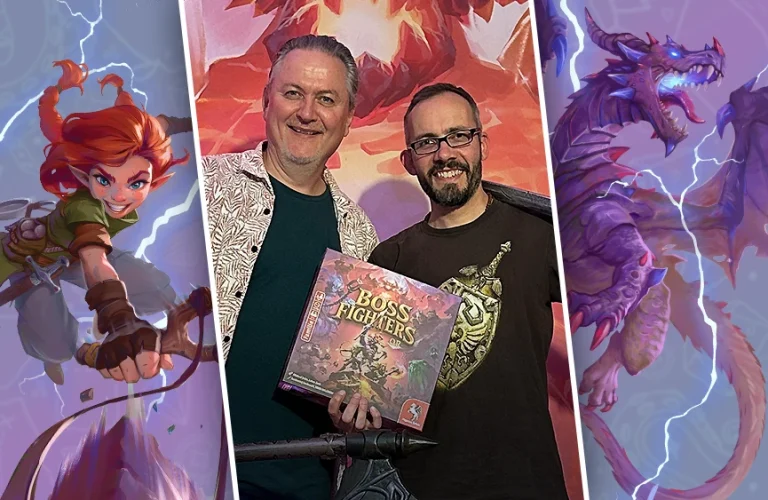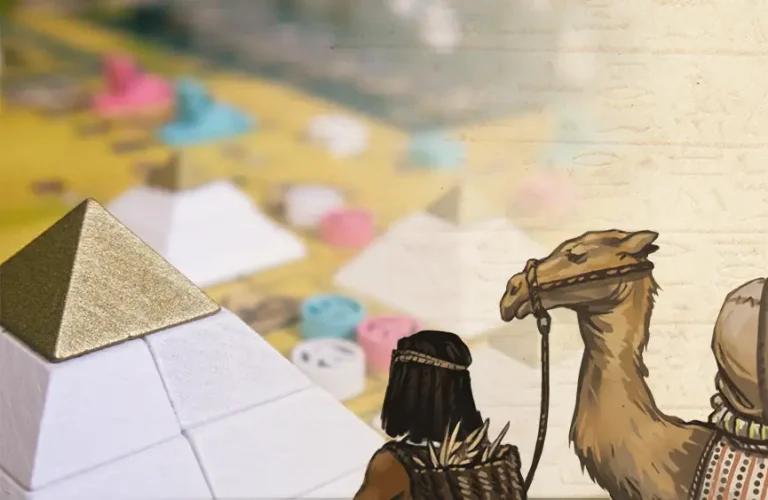Carnegie Hall is a world-renowned concert hall in Manhattan, New York, named after Andrew Carnegie. You’ve probably heard of Carnegie, but have you ever had the opportunity to dive into his life? Now you can, with our new expert game of the same name: Carnegie.
Andrew Carnegie was born in Scotland and moved to the USA with his family when he was 12, making his home in New York until his death in 1919. During the course of his long life, he lived the American Dream: Born to a weaver and the daughter of a cobbler and tanner, he worked his way up to become one of the richest people worldwide. But he didn’t just use the money to lead a privileged life, he also donated several billion dollars to charity. Hence, many public places in the USA still bear his name and almost everyone in the United States knows the tale of the steel magnate and philanthropist. Of course, his name is not unknown in Europe either and so the story of his life inspired Xavier Georges, who lives in Belgium, to design a game of the same name.
Even though the game’s mechanisms are only loosely based on Carnegie’s life, you still get numerous insights into his life. In the game, you not only strive to grow your own company, you should also put your money and your influence towards charitable objectives.
But let’s start at the beginning: A game of Carnegie is played over 20 rounds. The game is set around 1865, the year 30-year-old Andrew left the railroad company he had worked at until then to go establish his own company. To say that Carnegie started out with nothing would certainly be wrong as he had previously led the Western Division of the Pennsylvania Railroad and prior to that had served as the right-hand man of United States Assistant Secretary of War, Thomas A. Scott. But you, too, do not start at 0 – you receive the unbelievable amount of $12 and four Goods cubes at the beginning. After all, success has to be earned! Or as Carnegie said: “You cannot push anyone up a ladder unless he be willing to climb a little himself.” And so, your company at least starts out with five Departments from the sectors of Human Resources, Management, Construction, and Research & Development.

Now it is your turn to grow a company, invest in Research & Development, expand departments, recruit employees and send them all over the USA to realize construction projects or establish contacts. The first third of the game mainly covers developing your company and getting the ball rolling.
In the second third of the game, everything becomes easier. Your company managed to expand throughout the USA thanks to clever investments in real estate, industry, the development of transportation technology, and the expansion of transport networks. At the end of this phase, you have reached the peak of your success! Money is flowing and your investment potential is immense. In Carnegie’s life this corresponds approximately to the time around 1885. In the early 1870s, he had already started investing in steel after recognizing that it would ultimately eclipse iron. In 1889 Carnegie Brothers & Company, Ltd. merged with Henry Clay Frick’s coke manufacturing company. In 1892 the Carnegie Steel Company was founded – at this point the biggest steel company in the world.
In 1889, Carnegie published his article “The Gospel of Wealth”. It includes numerous theories describing his attitude towards his immense wealth that are still quoted to this day. For example, he wrote, “The man who dies thus rich dies disgraced.” No sooner said than done: in the following decades, he established more than 20 foundations and donated millions of US dollars to charity. And you, too, should use the third phase of a game of Carnegie to donate money because excess money does – in accordance with Carnegie’s belief – not earn you victory points at the end of the game. You can only achieve true success if you use your in-game wealth meaningfully. This also corresponds with Carnegie’s dictum that the first third of a life should be spend getting all the education one can, the second third making all the money one can, and the last third giving it all away to worthwhile causes.
In the game, there are four charitable branches in which you can invest your money – Education, Human Rights, Welfare, and Health. There are eight rounds – four during the course of the game, four shortly before the end – in which you can donate, so you should choose wisely how and when you want to use your wealth. Carnegie himself invested in a variety of projects. In the sector of education and welfare, for example, he endowed over 2,000 public libraries all over the world – he believed that everyone should have free access to education. He also established teacher funds as well as a Carnegie Hero Fund that awarded people who acted particularly selflessly and supported them, or in some cases their relatives, financially. The Fund was inspired by two men who attempted a rescue during a large mining accident in 1904. Touched by their sacrifice, Carnegie minted medals for their families and created the Hero’s Fund. Carnegie also used his wealth for Human Rights and Health. For example, he established the Carnegie Endowment for International Peace and financed substantial parts of the Peace Palace in Den Haag which houses, among others, the International Court of Justice. He also donated millions to science. His funding allowed the Carnegie Institution of Washington to come to life, enabling research of the classification of 23 stages of embryonic development, the so-called Carnegie stages.

One of his quotes, taken from a speech to Congress a few years before his death, describes him especially well: “My business is to do as much good in the world as I can; I have retired from all other business.” And so, Carnegie, spent the rest of his life, after retiring and selling his company to banker J.P. Morgan in 1901, putting his wealth towards charitable objectives. In 1919, Andrew Carnegie died at the age of 83, but not without founding the Carnegie Corporation of New York, where the majority of his remaining wealth went, and which advocates for peace, democracy, and education to this day.
But even though Carnegie was without a doubt one of the biggest philanthropists of the 20th century, there were also controversies surrounding his person. Two incidents in the late 1880s and the early 1890s still bring criticism. In 1889, the dam forming the artificial lake at which the exclusive South Fork Fishing and Hunting Club was located, in which Carnegie as well as around 60 other leading economy magnates were members, flooded. There had already been leakage previously that had been stopped provisionally with mud and straw. After heavy rainfall, the dam finally breached and 20 million tons of water flooded the city of Johnstown. More than 2,000 people died. None of the club’s members acknowledged their fault and all lawsuits were ultimately warded off. Carnegie founded a new library in Johnstown afterwards. Additionally, in 1892 a bloody labor confrontation took place at the main factory of the Carnegie Steel Company. When Carnegie’s business partner Henry Clay Frick sent strikebreakers into the factory, the fight escalated. Ten people died and many more were wounded. Ultimately, the governor even declared the laws of war over the town. The strike went down as one of the gravest and bloodiest in US-history.
Even though Carnegie includes some parallels to its historical name patron, it is still a game and not a historical simulation. Author Xavier explains: “Thus, I have not sought to evoke events such as the worker’s struggle for better working conditions, but rather to focus on the positive aspects of Carnegie’s life. I hope you will enjoy this game as it is presented.” We have nothing more to add to that. We hope you have fun playing the game!
Questions, comments, feedback? Share your thoughts with us at blog@pegasus.de.






